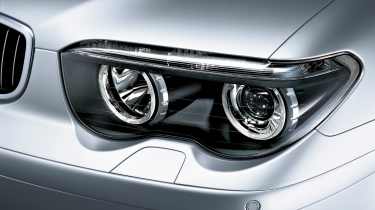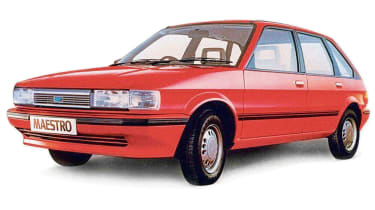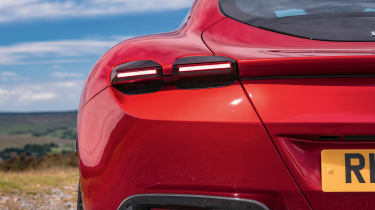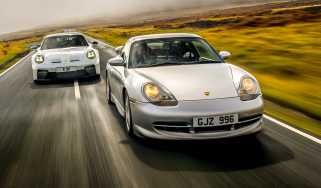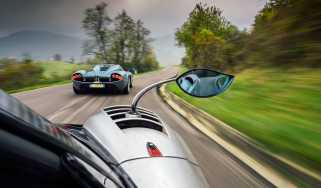How to design a car (part four): head and tail lights
It wan’t until the 1980s that car designers first had the freedom and the tools to really push head and tail light design. But sometimes less is more, says Stevens
No lighting of any type was ever fitted to a simple horse-drawn farm wagon. It was only with the growing use of carriages in towns and cities after dark that it became wise to fit ‘carriage lamps’ to warn pedestrians of oncoming traffic, though regardless of whether they were oil or candle-powered, these early lamps gave a hopelessly dim light.
Around the time that horseless carriages began to appear in the late 1890s, acetylene lamps became popular as they were less likely to be extinguished by rain or wind, and then in 1898 the Colombia Electric Vehicle Company introduced the first electric headlamps, though their fragile filaments and large, heavy dynamos limited the acceptance of electric lighting on early cars.
> How to design a car (part three): the C-pillar
It wasn’t until 1908 that the Birmingham-based Pockley Automobile Electric Lighting Syndicate marketed the world’s first complete sets of vehicle lights, including a red rear light. The technology was still very crude; the first ‘dipping’ (low beam) lights came from the Guide Company in 1915, but the driver had to stop the vehicle and re-set the headlamps, which was not that convenient. Cadillac introduced a lever system inside the car in 1917, and by the mid-1920s twin-filament bulbs were gaining traction, as were foot-operated dip switches. It was not until 1991 that Ford finally ditched the foot dipper on its Econoline vans.
A standardised 7in (178mm) round sealed-beam headlamp, one per side, was required for all vehicles sold in the United States from 1940, which left designers with little freedom, though from 1957 the law changed to allow smaller 5.75in (146mm) round sealed beams, two per side of the vehicle. The Citroën DS was ruined in its US form, both from an aesthetic and illumination point of view, by these absurd rules. (US regs would not even allow replaceable bulbs.) The law finally changed in 1974, for American manufacturers, and European and Japanese importers too; rectangular sealed beams were permitted as well as round ones!
The 1983 Austin Maestro (yes really) was the first car to have headlamp reflectors that were no longer parabolic; these ‘homofocal’ reflectors provided increased efficiency with a low bonnet line. With the introduction of CAD technology, Valeo, using its Cibié brand, developed highly complex multi-faceted reflector designs that revolutionised automobile design.
The next step in this rapidly evolving technology was the projector, or polyellipsoidal lamp. This has a simple, perfectly elliptical reflector with a halogen bulb at its focus and a condenser lens at the front. Designers were excited by its much smaller diameter, just 80mm, but on the downside the light unit was very long from front to back; the supporting electronic control box had to be positioned near the lamp, and weighed more than a kilo. There was also a tendency for all lights with this technology to look the same.
Almost every new car now has LEDs for front and rear lighting. The most recent LED lights, where the conventional bulb is replaced by an array of tiny light-emitting diodes (LEDs) are remarkably and dramatically bright. The LED is a semiconductor light source that releases energy in the form of photons; it’s fascinating how terms from science fiction have now entered our everyday lives! LEDs use considerably less power, which is helpful for electric vehicles, have a longer life, are physically robust, smaller, cheaper and faster acting, but they do need a separate electronic support system. This technology has further liberated designers, though maybe this is not always a good thing…
A few years ago, Ed Welburn, then in charge of design for GM, told me he was concerned about some of his design team’s more introverted members becoming obsessed with ‘building small and highly complex chrome-plated cities within the headlamp forms’. He observed that many preferred to work on CAD platforms rather than engage with the clay modellers on a full-sized car.
The head and tail lamps are among the single most expensive items in a vehicle’s ‘bill of materials’. Companies like Lotus, TVR and (in the past) even Ferrari could not afford the tooling costs for unique lights. Ferrari dipped into the Fiat light box (particularly that of the Fiat 850 Coupe), Lotus into Rover’s, and TVR into anybody’s! During my time as chief designer at Lotus, I did finally manage to persuade Michael Kimberley to invest in a unique front side/indicator light for the Elan – I then used that light for the McLaren F1 without telling Ron Dennis or any other senior management people. At that time and with our comparatively small budget we could not afford unique lights and I suspect that McLaren Cars are still in a similar position. For their most recent cars they appear to have used set tail-lamp elements to create a number of different looks for the 720S, P1, Speedtail and Senna; similarly the headlamp elements follow a similar philosophy.
The true advantage of incorporating an easily recognised light graphic obviously comes at night. The fiercely strict, crisp, horizontal lines of the Polestar tail lamps are unmistakeable, and the same goes for the headlamps; the company’s recent Precept show car suggests that a disciplined, product design led philosophy is the direction that it’s pursuing. BMW’s ‘halo’ headlamp designs dating from the start of the century used a clever circular ring of light surrounding the twin head and dip lamps for the side/parking lamps – a clever design detail.
Volvo, Toyota, Honda and Subaru have all adopted what are being called ‘lobster claw’ designs, where the upper and lower parts of the lamps extend inboard beyond the centre part; quite how these close similarities occur is not clear, but maybe spending too much time looking at what other companies are doing on Google Images doesn’t help. As for the 2018 Ford Focus and its tail lamps that wander whimsically all over the rear corner of the car, while failing to properly meet with the awkward fuel filler cover, well! Then again, Ferrari Roma tail lamps: wow!
What I haven’t mentioned so far is, of course, how good the headlights actually are for seeing at night. Some are marvellous; a few become drastically poor when dipped, and many are dazzling to oncoming cars and when seen in the rear-view mirror. There is progress to be made here.
Meanwhile, the new Land Rover Discovery mystifies me with its low-rent tail lamps that seem to have been sourced from Halfords’ trailer spares shelves while the headlamps look expensive and appear to come from a different design studio. New Minis with Union Jack-style tail lamps must be among the most cringe-making design details on a modern car, presumably proposed by a creaky old marketing person who still fondly remembers Carnaby Street, Mary Quant and miniskirts! That’s the problem with the latest very clever technologies: anything is possible but that is not necessarily a good thing!
> How to design a car (part two): front grilles
